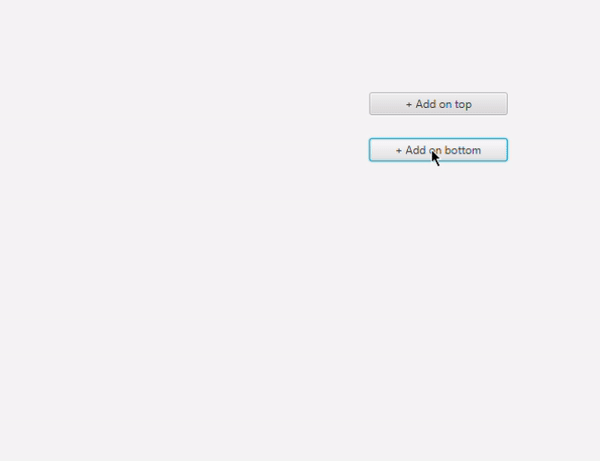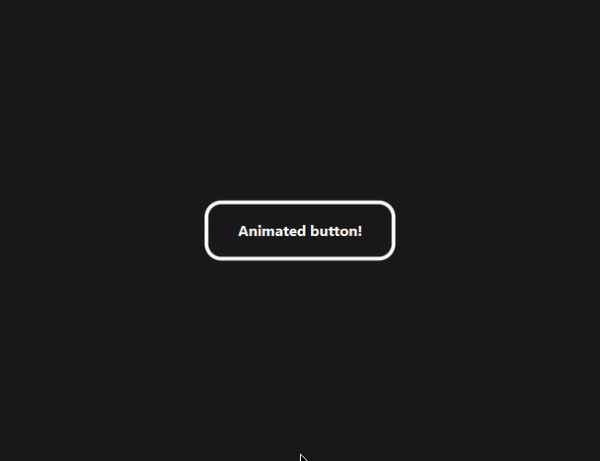https://github.com/iamgio/animated
:ocean: Modern animation library for JavaFX.
https://github.com/iamgio/animated
animated-javafx animation animation-library animations implicit-animations javafx javafx-animation javafx-animation-library javafx-library transitions
Last synced: 5 months ago
JSON representation
:ocean: Modern animation library for JavaFX.
- Host: GitHub
- URL: https://github.com/iamgio/animated
- Owner: iamgio
- License: mit
- Created: 2021-04-15T18:06:52.000Z (over 4 years ago)
- Default Branch: master
- Last Pushed: 2023-10-28T14:22:07.000Z (about 2 years ago)
- Last Synced: 2025-04-10T04:06:38.924Z (9 months ago)
- Topics: animated-javafx, animation, animation-library, animations, implicit-animations, javafx, javafx-animation, javafx-animation-library, javafx-library, transitions
- Language: Java
- Homepage:
- Size: 312 KB
- Stars: 168
- Watchers: 5
- Forks: 13
- Open Issues: 1
-
Metadata Files:
- Readme: README.md
- License: LICENSE
Awesome Lists containing this project
README
# animated
**animated** introduces **implicit animations**, a completely new concept in JavaFX strongly inspired by [Flutter's animations and motion widgets](https://flutter.dev/docs/development/ui/widgets/animation).
### Index
1. [Getting started](#getting-started)
2. [Implicit animations](#implicit-animations)
3. [Animated containers](#animated-containers)
4. [Animated switchers](#animated-switchers)
5. [Animated theme switch](#animated-theme-switch)
6. [Animated values](#animated-values)
7. [Other examples](#other-examples)
8. [FXML](#fxml)
9. [Kotlin extensions](#kotlin-extensions)
## Getting started
Maven:
```xml
eu.iamgio
animated
1.3.0
```
Gradle:
```gradle
allprojects {
repositories {
mavenCentral()
}
}
dependencies {
implementation 'eu.iamgio:animated:1.3.0'
}
```
> **Note**: v1.0.0 brought several important changes, including a different project structure,
> that may cause compilation errors when upgrading from 0.x versions.
> Please check the [migration guide](https://github.com/iamgio/animated/releases/tag/v1.0.0) to see what changed and quickly learn how to fix those errors.
---
## Implicit animations
Forget about timelines, explicit animations and other stuff that pollutes your code. This animation system will provide versatility to your code and interface.

**[Code](src/test/java/eu/iamgio/animatedtest/AnimatedTest.java)**
```java
Animated animated = new Animated(child, AnimationProperty.of(child.opacityProperty()));
root.getChildren().add(animated);
// Later...
child.setOpacity(0.5); // Plays the transition
```
This approach instantiates an `Animated` node that contains one child and is bound to a property.
Now that we have set an animated bound, we can see that `child.setOpacity(someValue)` creates a transition between the initial and final value.
A single `Animated` object can take multiple properties at once,
and they can also be added later by accessing `Animated#getTargetProperties`.
### Presets
[Pre-made animation properties](src/main/java/eu/iamgio/animated/binding/presets) represent a concise and efficient
way to create animated bindings, rather than manually referencing to the
raw JavaFX property as we previously did.
- `AnimatedBlur`
- `AnimatedColor`
- `AnimatedDropShadow.Color`
- `AnimatedDropShadow.Radius`
- `AnimatedLayout`
- `AnimatedOpacity`
- `AnimatedPrefSize`
- `AnimatedRotation`
- `AnimatedScale`
- `AnimatedTranslatePosition`
When these properties are instantiated via their zero-arguments constructor,
the target node references to the `Animated`'s child.
```java
// Before
new Animated(child,
AnimationProperty.of(child.prefWidthProperty()),
AnimationProperty.of(child.prefHeightProperty())
);
// After: better!
new Animated(child, new AnimatedPrefSize());
```
### Independent animations
`Animated` is a node that has to be added to the scene in order to work.
Here is a different approach that is independent from the scene:
```java
AnimationProperty.of(node.opacityProperty()).register();
// or
new AnimatedOpacity(node).register();
// Later...
node.setOpacity(0.5); // Plays the transition
```
> Animations are not only visual:
> you can also animate other changes such as audio volume!
### Custom animations
The default animation is linear and lasts 1 second.
It can be customized by calling `withSettings(AnimationSettings settings)` or `custom(Function settings)`,
both methods available on animated nodes and animation properties.
Examples:
```java
Animated animated = new Animated(child, AnimationProperty.of(child.opacityProperty()));
.custom(settings -> settings.withDuration(Duration.seconds(.5)).withCurve(Curve.EASE_IN_OUT));
```
```java
Animated animated = new Animated(child,
new AnimatedOpacity()
.custom(settings -> settings.withDuration(Duration.seconds(.8))),
new AnimatedRotation()
.custom(settings -> settings.withDuration(Duration.seconds(.5))),
).custom(settings -> settings.withCurve(Curve.EASE_OUT));
```
---
## Animated containers
**animated** provides custom implementations of `VBox` and `HBox` that animate their content whenever their children are affected by a change.
This feature is based on animations from [AnimateFX](https://github.com/Typhon0/AnimateFX).

**[Code](src/test/java/eu/iamgio/animatedtest/AnimatedContainerTest.java)**
**Constructors**:
- `Animation in, Animation out` wraps two `AnimateFX` objects into customizable `animated` objects;
- `AnimationFX in, AnimationFX out` takes two raw AnimateFX animations that cannot be customized;
- `AnimationPair animation` takes a pair of animations, mostly used with pre-made pairs (e.g. `AnimationPair.fade()`).
`pause()` and `resume()` allow disabling/enabling animations so that you can switch back to the regular implementation and forth.
Example:
```java
AnimatedVBox vBox = new AnimatedVBox(AnimationPair.fade());
// Later...
vBox.getChildren().add(someNode); // someNode fades in
vBox.getChildren().remove(someNode); // someNode fades out
```
---
## Animated switchers
The library also provides an `AnimatedSwitcher` node that creates a transition whenever its child changes.
As for animated containers, this feature relies on AnimateFX.

**[Code](src/test/java/eu/iamgio/animatedtest/AnimatedSwitcherTest.java)**
See [animated containers](#animated-containers) for information about constructors.
Right after the instantiation, calling `of(Node child)` will set the initial child without any animation played.
Example:
```java
AnimatedSwitcher switcher = new AnimatedSwitcher(
new Animation(new FadeInDown()).setSpeed(2),
new Animation(new FadeOutDown()).setSpeed(1.5)
).of(firstChild);
root.getChildren().add(switcher);
// Later...
switcher.setChild(secondChild); // Plays the transition
```
### Related: animated text
`AnimatedLabel` uses a switcher to animate text.
Example:
```java
AnimatedLabel label = new AnimatedLabel("Text", AnimationPair.fade());
// Later...
label.setText("New text"); // Plays the transition
```
---
## Animated theme switch
It is possible to create a transition whenever the stylesheets of the scene change via `AnimatedThemeSwitcher`, based on AnimateFX.

**[Code](src/test/java/eu/iamgio/animatedtest/AnimatedThemeTest.java)**
```java
scene.getStylesheets().setAll("/light.css"); // Initial theme
AnimatedThemeSwitcher themeSwitcher = new AnimatedThemeSwitcher(scene, new CircleClipOut());
themeSwitcher.init(); // Required!
// Later...
scene.getStylesheets().setAll("/dark.css"); // Plays the transition
// This also works with add, set, remove and other List methods.
```
> **Note** that not every type of root can be animated properly, such as `VBox` and `HBox`.
> Parents that allow overlapping children, i.e. `Pane`, are suggested.
---
## Animated values
The animated binding API provides a way to animate the content of a `Label`
every time its associated value changes.

**[Code](src/test/java/eu/iamgio/animatedtest/AnimatedCurrencyTest.java)**
```java
AnimatedValueLabel label = new AnimatedValueLabel<>(0)
.custom(settings -> settings.withCurve(Curve.EASE_IN_OUT));
// We can also customize the displayed text
label.setTextMapper(value -> "The value is " + value);
// Later...
label.setValue(10); // Plays the transition
```
---
## Other examples

**[Button color and border](src/test/java/eu/iamgio/animatedtest/AnimatedButtonTest.java)**

**[Drop shadows + label](src/test/java/eu/iamgio/animatedtest/AnimatedShadowTest.java)**

**[Root switch](src/test/java/eu/iamgio/animatedtest/AnimatedRootSwitchTest.java)**

**[Layout alignment](src/test/java/eu/iamgio/animatedtest/AnimatedLayoutTest.java)** (inspired by the Edge home page)
---
## FXML
- **Animated**
```xml
```
- **AnimatedContainer**
```xml
```
- **AnimatedSwitcher**
```xml
```
- **AnimatedLabel**
```xml
```
- **AnimatedValueLabel**
FXML has issues with generic types, so you will need to instantiate an
`AnimatedIntValueLabel` or `AnimatedDoubleValueLabel`.
```xml
```
> When instantiating an ``,
> the class name (case sensitive) is searched in the following packages:
> - [`animatefx.animation`](https://github.com/Typhon0/AnimateFX/tree/master/animatefx/src/main/java/animatefx/animation)
> - [`eu.iamgio.animated.transition.animations`](src/main/java/eu/iamgio/animated/transition/animations) and sub-packages
---
## Kotlin extensions
[Extension functions](src/main/kotlin/eu/iamgio/animated/AnimatedExtensions.kt) make the library less verbose with Kotlin.
Example:
```kotlin
val animated: Animated = Animated(child, child.someProperty().animated())
val pair: AnimationPair = FadeIn().options(speed = 1.5) outTo FadeOut()
```